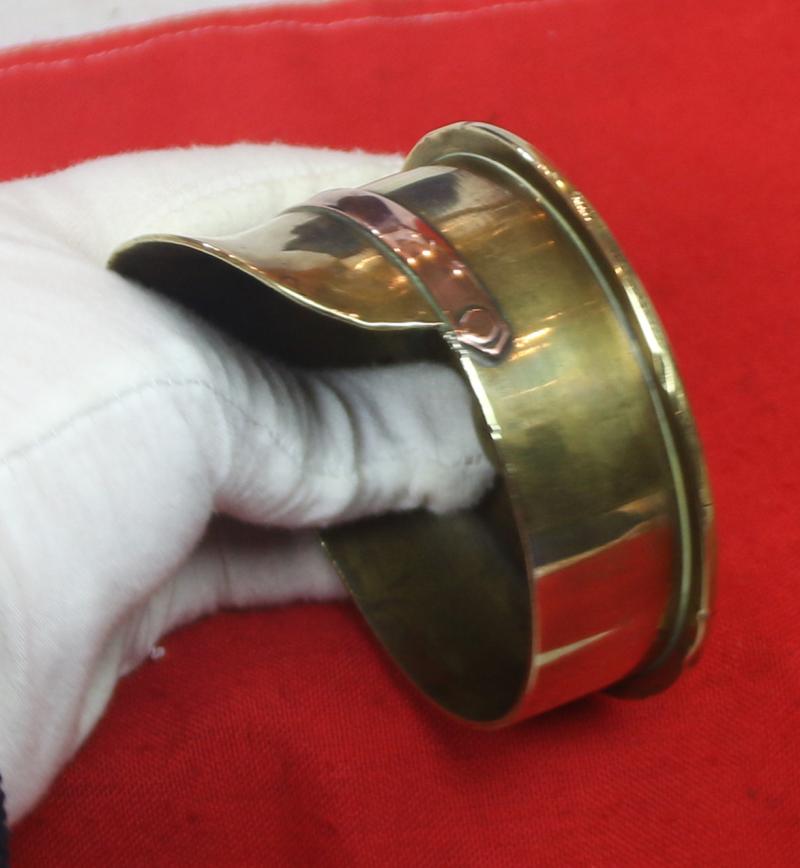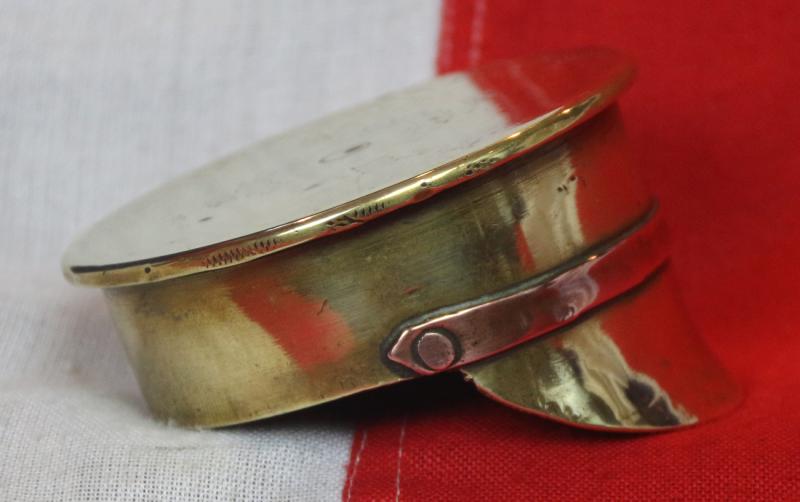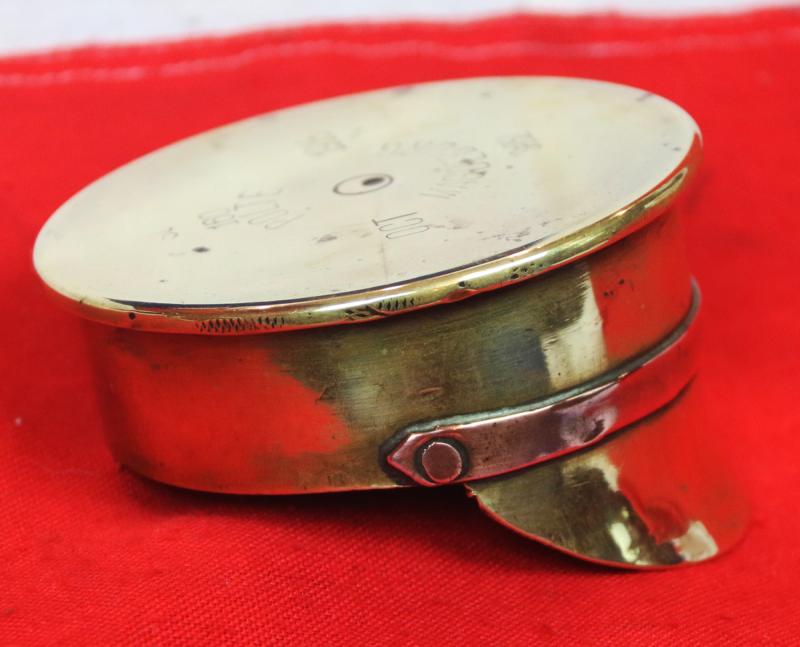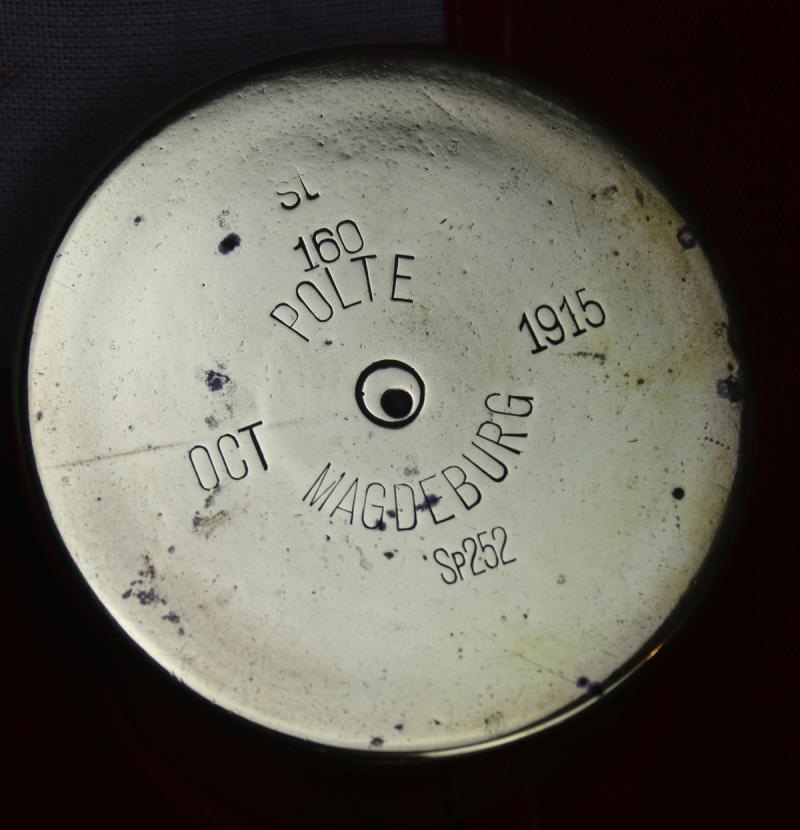A Delightful Piece of Large Quality 'Trench Art'. A German Shell Trench Engineered Into The Form Of A British 1905 Pattern Trench Service Cap. Wonderful Quality
In near mint condition.
‘Trench art’ is a term used to describe objects made from the debris and by-products of modern warfare. Trench Art is usually associated with the First World War, although similar items have been produced in other conflicts too.
Most trench art was made by servicemen to pass the time when not in the front line. While much of it was simple and amateurish, the production of some examples required metalworking skills or workshop facilities. Prisoners of war, faced with a constant battle against boredom, produced similar items.
The standard service dress cap prescribed for wear by all non-commissioned ranks of the British Army from 1905, excluding Scottish regiments. With its round top and stiff peak, the cap was not an entirely practical form of headdress in sunshine or windy weather. One concession to wet conditions was that it was lined with a waterproof black oilskin composition to the crown. The cap continued in service throughout the First World War but was augmented by the 1915 pat. winter trench cap, known as the 'Gor Blimey', and the later soft peaked field cap in 1917. Both of the latter had their merits, and had the uppermost regard of comfort to the soldier in mind and could be folded away and stowed easily when not worn. Naturally as shrapnel helmets became available on a wider scale of issue from 1916, cloth headdress was worn less in the trenches.
Shell case by Polte Werk in Magdeburg
This trench art piece is most likely made from a German 77 x 230mmR cartridge case
Produced by Polte Werke, Magdeburg, in October of 1915.
“St” indicates a reinforced (stronger) cartridge case construction.
“160” = serial number
“Sp252” identifies the inspector for quality control.
This cartridge case was used in the German "7,7cm leichte Feld Kanone (l.F.K.) 96 n/A " or 7.7cm (77mm) light field cannon, 1896 new model.
Code: 25220






